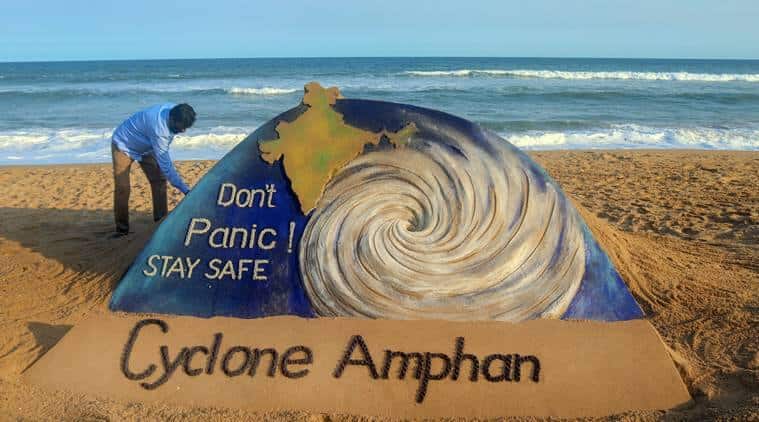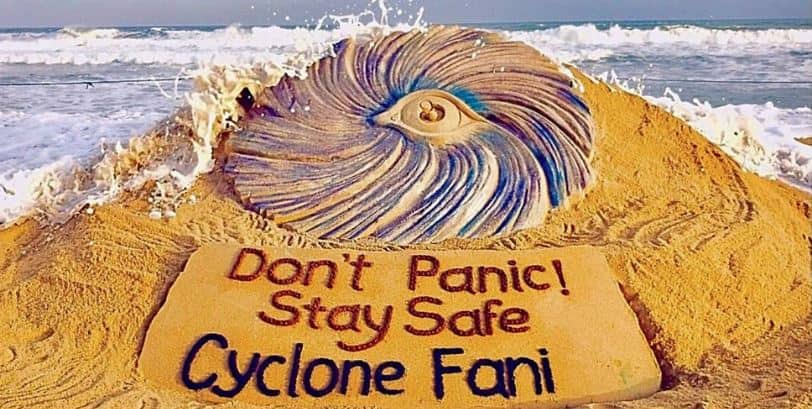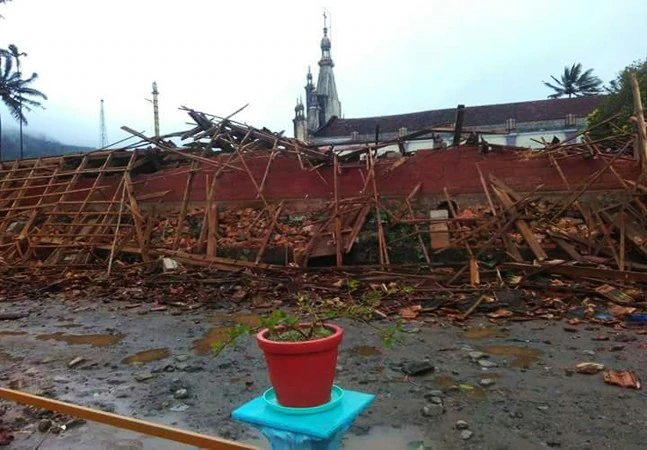In recent times, India has faced the formidable challenge of battling some of the deadliest cyclones to hit its shores. These natural disasters, characterized by powerful winds and torrential rains, have left a profound impact on the lives of those in their path. This blog delves into the stories behind the five deadliest cyclones in recent Indian history, exploring their origins, the havoc they wreaked, and the resilience of the communities affected.
Super Cyclone Amphan (2020):

Our journey begins with the most recent and devastating cyclone to strike the Indian subcontinent – Super Cyclone Amphan in 2020. Originating in the Bay of Bengal, Amphan rapidly intensified into a super cyclone with wind speeds reaching up to 160 miles per hour. Its massive scale covered the entire Bay of Bengal, posing a significant threat to coastal regions. Amphan made landfall in West Bengal and Bangladesh, causing widespread destruction. The storm surge inundated coastal areas, leading to severe flooding and extensive damage to infrastructure. The impact was felt in Kolkata, one of India’s major cities, where strong winds uprooted trees, tore down power lines, and damaged buildings.
Cyclone Fani (2019):

The year 2019 witnessed the ferocity of Cyclone Fani, making landfall in the state of Odisha. Fani rapidly intensified into an extremely severe cyclonic storm, with wind speeds exceeding 120 miles per hour. The authorities, having learned from past experiences, undertook massive evacuation efforts, moving over a million people to safety. Despite these efforts, Fani left a trail of destruction in its wake. Coastal areas faced the brunt of the storm surge, and wind-induced damages were severe. The cyclone disrupted power and communication lines, making rescue and relief operations challenging. However, the coordinated efforts of the government and non-governmental organizations played a crucial role in minimizing casualties and aiding recovery.
Cyclone Yaas (2021):

Cyclone Yaas, a severe tropical storm, struck the eastern coast of India and Bangladesh in May 2021, causing widespread destruction. With wind speeds reaching up to 140 kilometers per hour, Yaas triggered heavy rainfall, leading to flooding, storm surges, and landslides in vulnerable areas. The affected regions, particularly West Bengal and Odisha in India, witnessed extensive damage to infrastructure, agriculture, and homes, displacing thousands of people.
Government agencies and disaster response teams were actively involved in evacuations and relief operations, aiming to minimize the impact on human lives. The cyclone highlighted the importance of early warning systems and community preparedness in mitigating the effects of such natural disasters. The aftermath prompted significant recovery and rebuilding efforts, emphasizing the resilience and collaborative spirit of communities in the face of adversity.
Cyclone Titli (2018):

Heading back to 2018, Cyclone Titli struck the eastern coast of India, making landfall in Odisha and Andhra Pradesh. Titli rapidly intensified into a very severe cyclonic storm, causing extensive damage to infrastructure and agriculture. Heavy rainfall triggered flash floods and landslides in the region. Despite the challenges, the response to Cyclone Titli showcased improvements in disaster management. Timely evacuation efforts and the use of technology for early warning systems played a crucial role in mitigating the impact. The resilience of local communities also shone through as they worked together to rebuild their lives.
Cyclone Ockhi (2017):

Our journey concludes with Cyclone Ockhi in 2017, a cyclone that originated in the Arabian Sea. Ockhi had a significant impact on the western coast, affecting states like Kerala and Maharashtra. The cyclone brought heavy rainfall, causing landslides and flooding in several areas. One of the notable aspects of Cyclone Ockhi was its impact on fishermen at sea. Many fishing vessels were caught in the cyclone, leading to tragic incidents of loss of life. This highlighted the need for improved communication systems to ensure the safety of those at sea during such extreme weather events.
! Visit my Blog to know more about cyclones: – usanewsforyou.com
The stories of these five deadliest cyclones in recent Indian history weave a narrative of resilience, preparedness, and the ongoing battle against nature’s fury. As climate patterns continue to evolve, the lessons learned from these experiences become crucial for building a more resilient future. The strength of communities, coupled with advancements in forecasting and disaster management, provides hope that India will navigate through future cyclones with increased efficacy and minimize the toll on human lives and infrastructure. The journey continues, and so does the determination to face nature’s challenges head-on
! Click to know more about Indian Cyclones Tropical cyclones in India – Wikipedia
